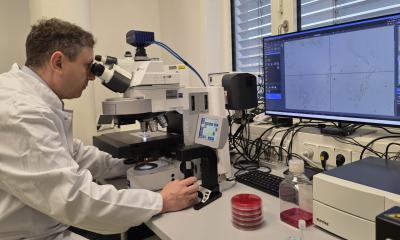High-sensitivity stimulated emission microscopy
Colourful, non-fluorescent tiny molecules, such as haemoglobin, can now be imaged with high resolution and sensitivity thanks to a new microscopy technique revealed in Nature (9/09. pp 1105-1109; N&V). The technique promises to find broad applications in medical imaging and biological research, according to researchers Xiaoliang Sunney Xie (Harvard University, Cambridge, Maryland) and Stefan Hell (Max-Planck-Institute for Biophysical Chemistry, Gottingen, Germany).
The method exploits a property called stimulated emission, in which a photon hitting an atom causes an electron to drop an energy level and results in the creation of another photon. Stimulated emission can be applied to all molecules, giving the technique a big advantage over other microscopy methods that either use fluorescent tags to mark key molecules, or exploit non-fluorescent techniques but with lower sensitivity. Stimulated emission microscopy thus offers the opportunity to study a plethora of non-fluorescent, colourful molecules, which have until now not been seen in super-resolution microscopy.
The researchers demonstrate proof-of-principle in a handful of biological systems. In particular, they show that the technique can be used to monitor the delivery of a particular non-fluorescent drug across the skin, highlighting distribution of the blue dye at both cellular and tissue levels. They also demonstrate detailed imaging of the blood vessels in a nude mouse ear, tracking the position of single red blood cells within individual capillaries and raising the prospect of three-dimensional mapping of blood oxygenation levels
12.11.2009











